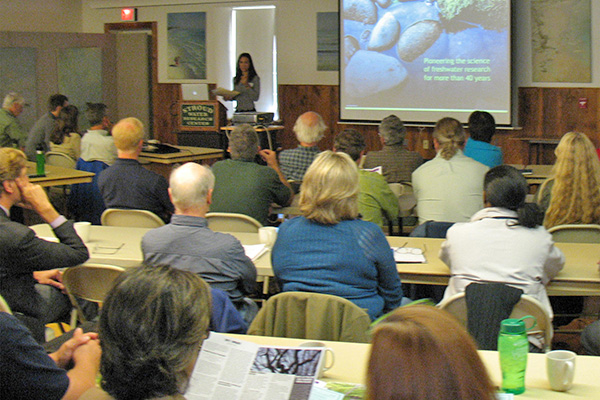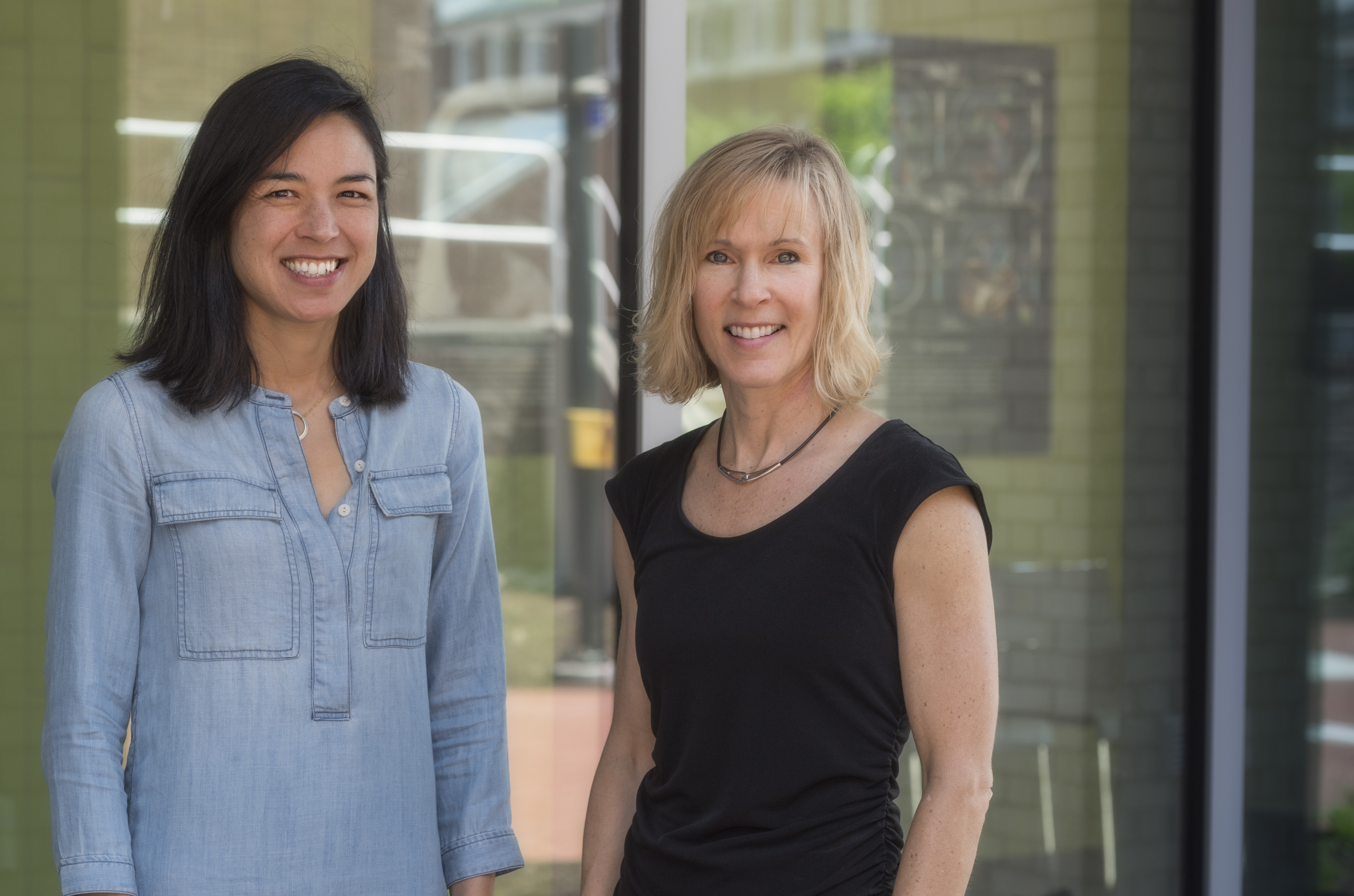
Watershed symposium
UD research presented at White Clay Creek symposium
1:11 p.m., Oct. 5, 2012--Faculty and students from the University of Delaware presented research on watershed issues at a recent symposium that brought together a variety of stakeholders with shared interest and expertise in ecosystems.
The Sept. 25 White Clay Creek symposium, hosted by the White Clay Wild and Scenic Management Committee at the redesigned Stroud Water Research Center campus in Avondale, Pa., was the first of its kind in many years.
Research Stories
Chronic wounds
Prof. Heck's legacy
Presentations were given by individuals representing a variety of watershed health and management perspectives and included a broad range of topics, from current research on native fish and mussel populations, to sediment source and impacts, to the detail of southern Chester County’s approach to stormwater permit applications.
Among the morning presenters from the University of Delaware were visiting scholar Diana Karwan of the Department of Geological Sciences, who spoke about “Using Chemistry to Determine Sediment Source in the White Clay Creek”; Jim Pizzuto, professor in the Department of Geological Sciences, who examined “Rates and Patterns of Particle Transport in Piedmont Watersheds”; and post-doctoral researcher Carl Rosier of the Delaware Environmental Institute, whose presentation focused on “Assessing the Effects of Canopy-derived Nutrient Fluxes on Key Soil Ecosystem Services.”
The afternoon included a presentation by WRA Director Gerald Kauffman titled, “Free the Shad!”
Each session was followed by a question and answer session and a lively discussion.
The morning presentations were followed by a tour of Stroud’s new Moorhead Environmental Complex, a “green” building that supports Stroud’s public education and outreach efforts.
The event concluded with a field tour of the network sensors developed by Stroud staff for use in the Critical Zone Observatory project.
The symposium participants hailed the event as a great success and gave very positive reviews about the presentations, venue and overall group assembled.
The symposium was organized by the White Clay Wild and Scenic Management Committee in conjunction with the Delaware Nature Society, the University of Delaware’s Water Resources Agency (WRA), and the Stroud Water Research Center.
For more information, contact Martha Corrozi Narvaez at mcorrozi@udel.edu.
Article by Kate Miller
Photo by Tom Hubbard of United Water Delaware








